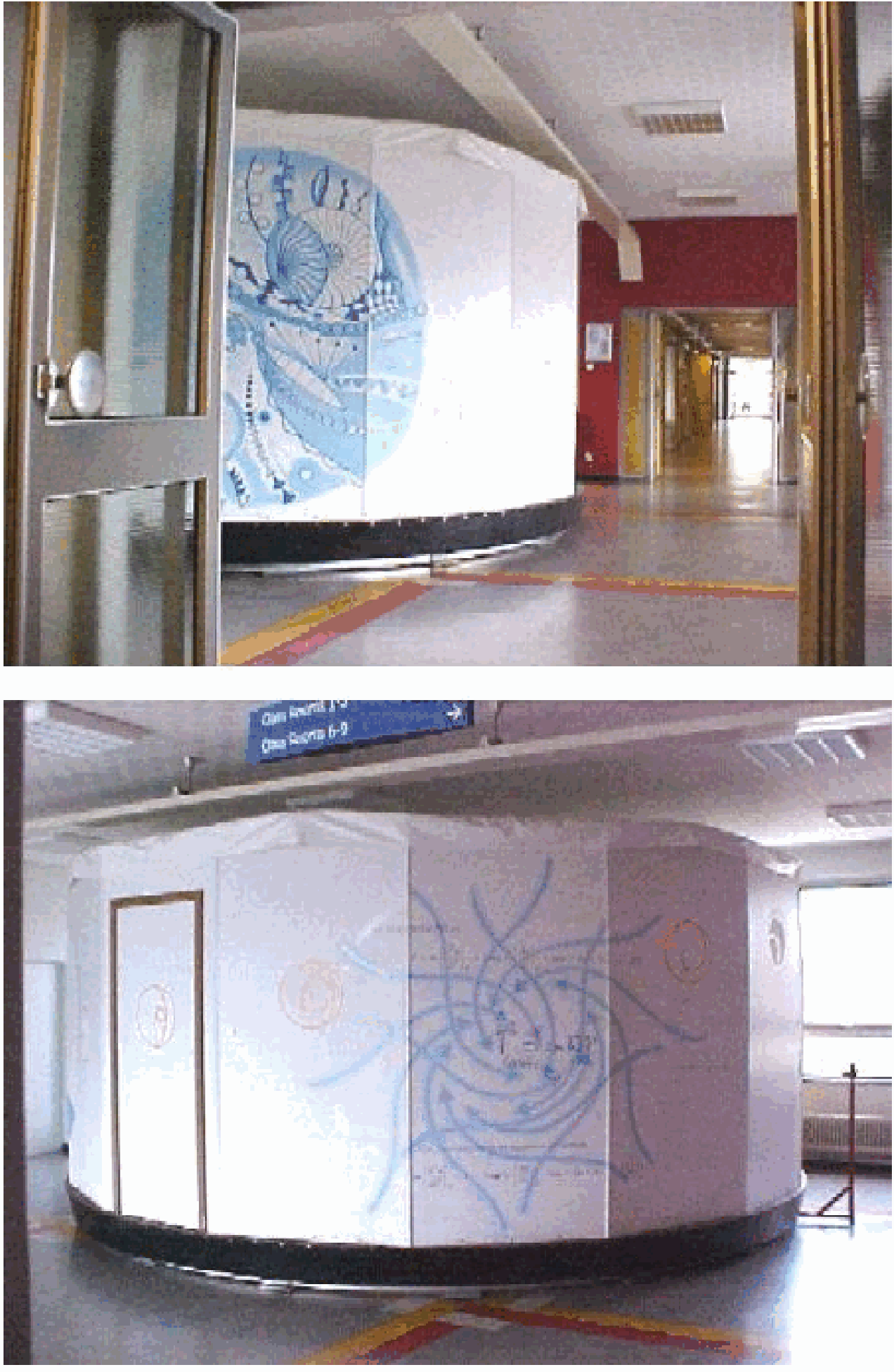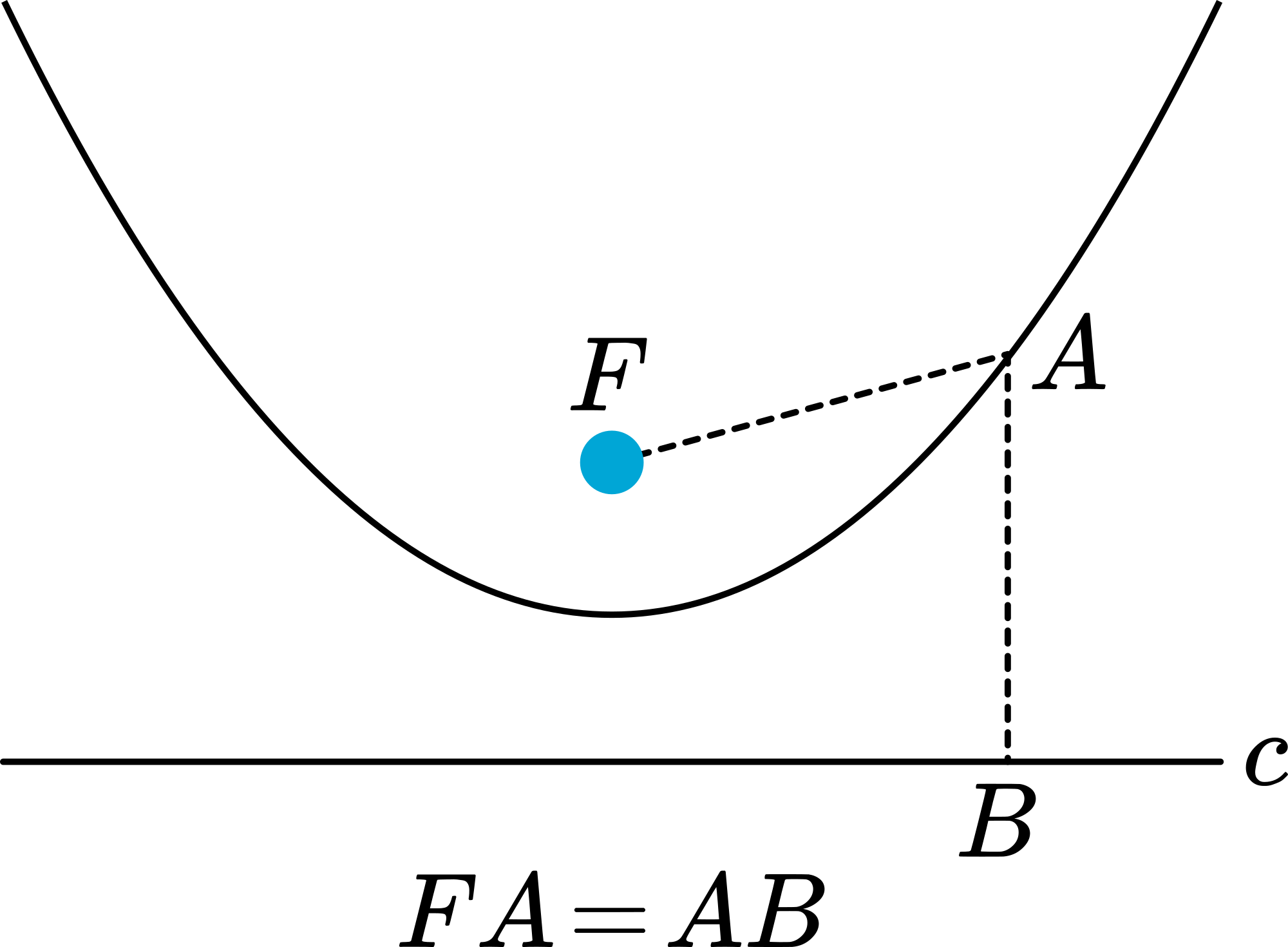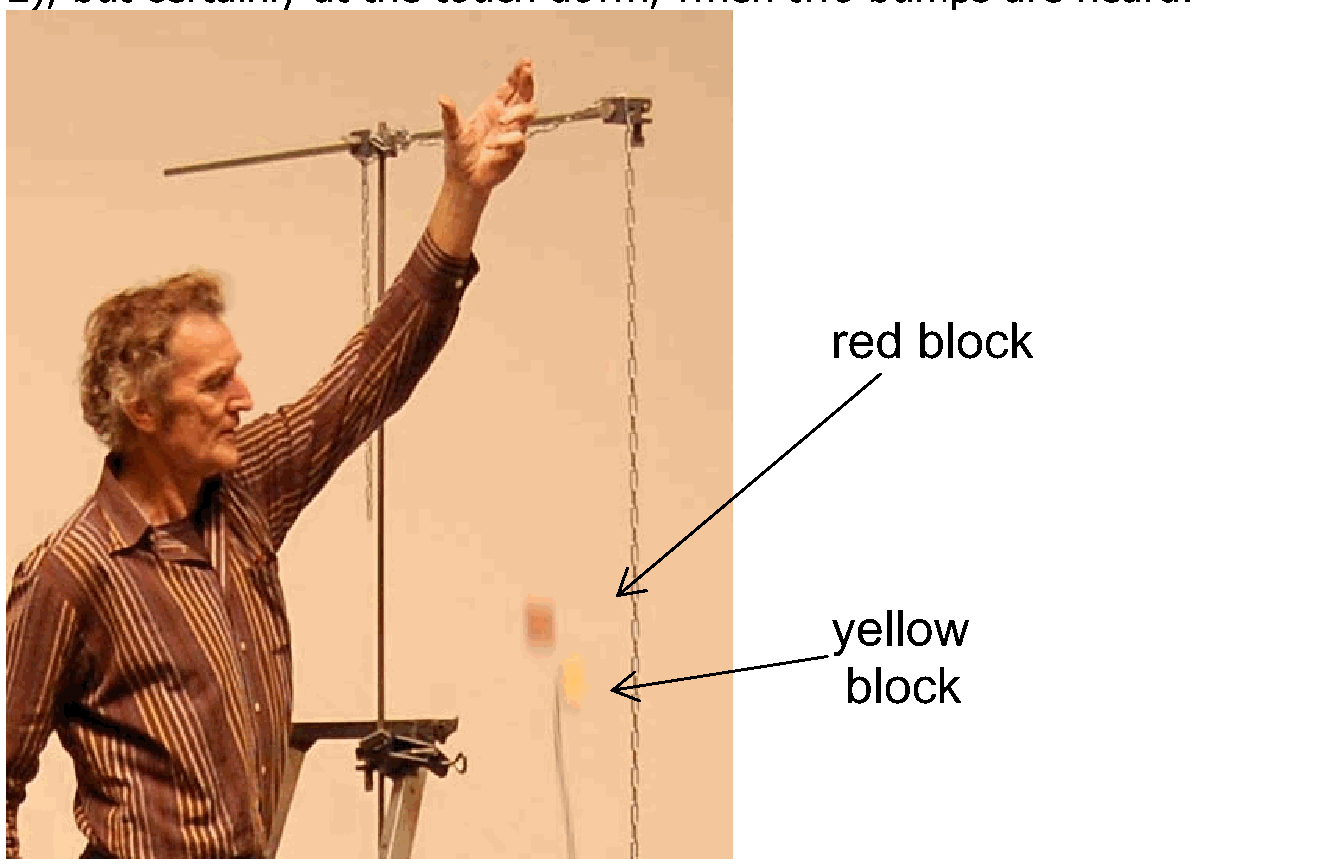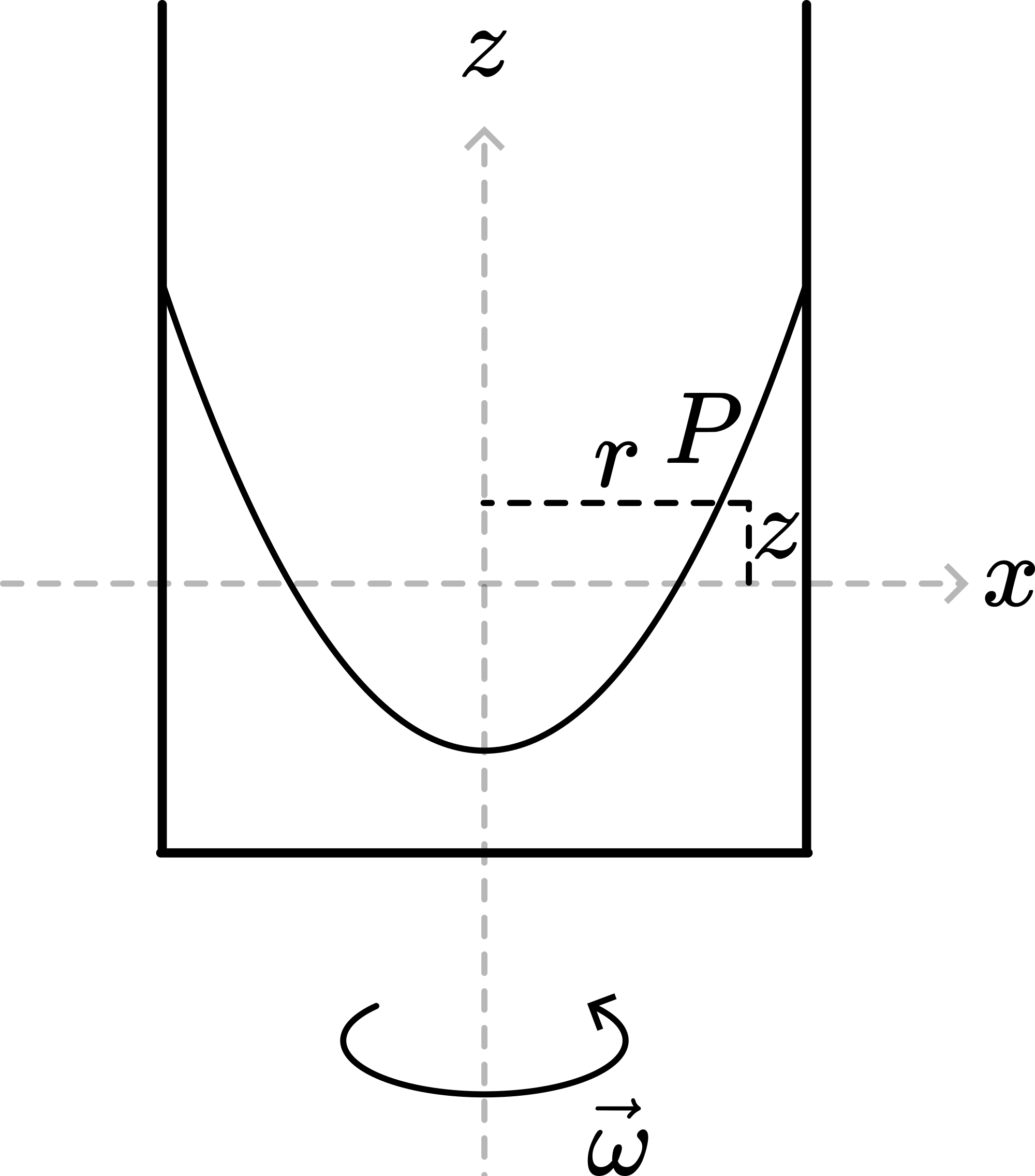06 Rotating Liquid#
Aim#
To show that the surface of a rotating liquid forms a paraboloid
Subjects#
1E20 (Rotating Reference Frames)
2B20 (Static Pressure)
Diagram#

Fig. 57 .#
Equipment#
Glass beaker, \(1 \mathrm{~l}\), fixed to an electric motor, variable speed
Rectangular reservoir
Black screen
Presentation#
The glass beaker is half-filled with water and submerged in a square reservoir. Using an electric motor, the beaker is set to rotate. Gradually, the liquid climbs the wall of the beaker until it stabilises. The resulting paraboloid shape becomes visible. A video camera and projector are used to project the image of the paraboloid onto the blackboard. Using chalk, the shape of the parabola is traced on the board. Next, it is checked whether the drawn shape is truly a paraboloid by identifying the focal point (\(F\)) and course line (\(c\)). Our experience is that the positions of this point and line are found quickly by trial and error (until the distances of focal point and course line to the drawn line are equal: see Figure 58).

Fig. 58 .#
Explanation#
In a rotating reference frame, the liquid is in static equilibrium. In this reference frame, the sum of the forces acting on the particles on the surface will be perpendicular to that surface. Two forces are acting on such a particle: gravity, \(F_{1}=d m g\), and the centrifugal force, \(F_{2}=d m \omega^{2} r\). Figure 59 shows: \(\tan \alpha=\frac{d y}{d x}=\frac{\omega^{2} x}{g}\) and from this \(y=\frac{1}{2} \frac{\omega^{2} x^{2}}{g}+c\). This is the formula of a parabola.

Fig. 59 .#
The constant \(c\) indicates the position of the lowest point of the rotating liquid. If the \(x\) axis in Figure 58 is located in the surface of the liquid at \(\omega=0\), then, because of the conservation of mass and the assumed incompressibility of the water, one obtains: \(\int_{0}^{a} y d x=0\) After integration we find: \(c=-\frac{1}{6} \frac{\omega^{2} a^{2}}{g}\)
Explaining can also be done from the point of view of hydrostatics (see Figure 60).

Fig. 60 .#
Pressure in the liquid is a function of \(r\) and \(z\). When rotating, the force field has two components: gravity, \(\frac{\partial p}{\partial z}=-\rho g\), and centrifugal, \(\frac{\partial p}{\partial r}=\rho \omega^{2} r\). So \(d p=-\rho g d z+\rho \omega^{2} r d r\). After integration: \(p=-\rho g z+\frac{1}{2} \rho \omega^{2} r^{2}+c\). So surfaces with equal pressure are determined by \(z=\frac{\omega^{2}}{2 g} r^{2}+const.\), showing the parabolic relationship.
Remarks#
When not using the rectangular reservoir, only the central portion of the rotating beaker produces a satisfactory image, but what is happening to the liquid inside the beaker near the edge of the beaker is observed distorted. The rectangular reservoir corrects this; the square reservoir functions as an optical corrector.
When the rotational speed can be varied, the lowering of the liquid (\(c\)) with the square of the rotational speed (\(\omega\)) can be observed.
The German company ‘Phywe’, has in its laboratory equipment a rotating liquid cell (part number 02536.01) through which the paraboloidic shape and the location of the lowest point can easily be determined.
Sources#
Roest, R., Inleiding Mechanica, pag. 323-325
Borghouts, A.N., Inleiding in de Mechanica, pag. 217 and 309
Phywe, University Laboratory Experiments, part Vol. 1-5, pag. 1.3.2
